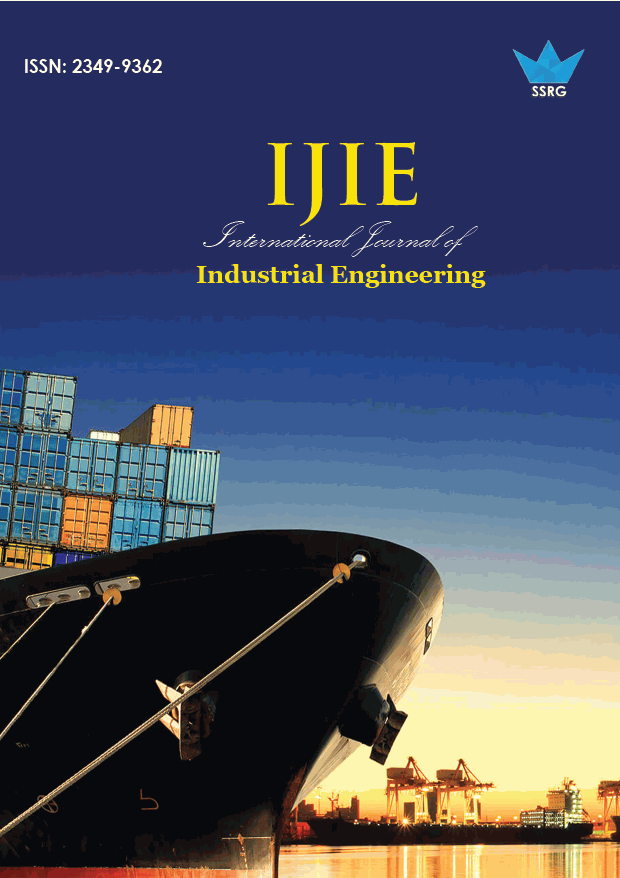Hazard Identification, Risk Assessment and Risk Control in Foundry

| International Journal of Industrial Engineering |
| © 2015 by SSRG - IJIE Journal |
| Volume 2 Issue 2 |
| Year of Publication : 2015 |
| Authors : SheikAllavudeen.S and Sankar.S.P |
How to Cite?
SheikAllavudeen.S and Sankar.S.P, "Hazard Identification, Risk Assessment and Risk Control in Foundry," SSRG International Journal of Industrial Engineering, vol. 2, no. 2, pp. 1-4, 2015. Crossref, https://doi.org/10.14445/23499362/IJIE-V2I3P101
Abstract:
Foundry work is the process of producing metal castings by melting the metal into a liquid state then pouring the metal into a mould which contains a hollow cavity of desired shape. A pattern is used to make the mould of the required article. Sometimes, the core inside the mould determines the internal cavity’s dimension. Foundries are of two types. Ferrous foundries produce steel and iron castings. Non ferrous foundries produce copper based alloys casting, aluminium-based alloys casting and other alloys. Foundry industry is considered to be a high risk area since it contains the hazardous operations. Assessing the risk and controlling the risk according to the aspects of occupational health and safety is very hard in foundry. The motive of this project is identifying the hazard and risk associated with the various steps involved in each process and taking all the possible measure to control the risk.
Keywords:
Industrial Safety, Foundry, Hazard Identification, Risk Assessment, Control Measures
References:
[1] “The Factories Act, 1948” (Act 63 of 1948) [G.O (Rt.) No. 29, Labour and Employment (M-2), dated the 22nd February, 2012.]
[2] “Guide to managing risks associated with foundry work”
http://www.safeworkaustralia.gov.au/sites/SWA/about/Publications/Documents/770/Guide-Managing-Risks-Associated-Foundry-Workl.pdf
[3] “The Manufacture, Storage And Import Of Hazardous Chemicals (Amendment) Rules, 2000”
[4] “Occupational Safety and Health Administration” https://www.osha.gov/
[5] “Gas Cylinders Rules, 2004”.
[6] J.H.T.H. Andriessen(2002), Safety behavior and safety motivation
[7] Duijm, N. J., Hazard analysis of technologies for disposing explosive waste, Journal of Hazardous Materials, A90, 2001, pp. 123–135.
[8] Jeong, K., Lee, D., Lee, K. and Lim H., A qualitative identification and analysis of hazards, risks and operating procedures for a decommissioning safety assessment of a nuclear research reactor, Annals of Nuclear Energy 35, 2008, pp.1954–1962.
[9] Indian Standard “Code Of Practice For Electric Overhead Travelling Cranes And Gantry Cranes Other Than Steel Work Cranes” IS: 3177 – 1999
[10] Indian Standard “Code Of Practice For Industrial Ventilation” IS: 3103 - 1975
[11] “Occupational Health and Safety Council” http://www.oshc.org.hk
[12] “The Petroleum Rules, 2002”.
[13] “The Static Mobile Pressure Vessel (Unfired) Rules, 1981”.
[14] “The Tamilnadu Factories Rules, 1950 [G.O Ms. No. 53, Labour and Employment (M-2), dated the 12th April, 2012.]
[15] Indian Standard “Code Of Practice For Industrial Lighting” IS: 6665 – 1972.
[16] Indian Standard “Identification Of The Contents Of Industrial Gas Cylinders” IS: 4379 – 1981.
[17] “Hazard identification and risk assessment of industries processing” http://www.uws.edu.au/data/assets/pdf/0020/12917/ Hazard Identification Risk Assessment and control Procedure 2008.pdf
[18] “Material Safety Data Sheet (MSDS)” http://en.wikipedia.org/wiki/Material_safety_data_sheet http://www.sciencelab.com/
[19] “Personal Protective Equipment” with IS Standards http://en.wikipedia.org/wiki/Personal_protective_equipment

 10.14445/23499362/IJIE-V2I3P101
10.14445/23499362/IJIE-V2I3P101